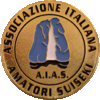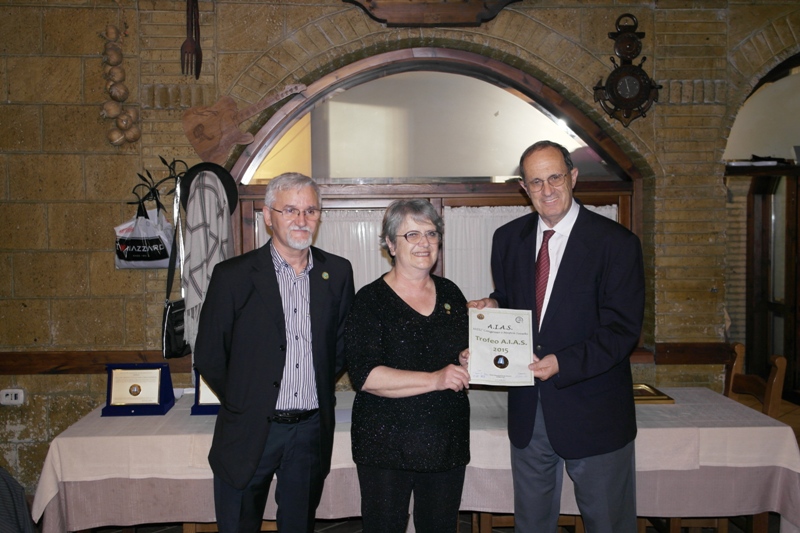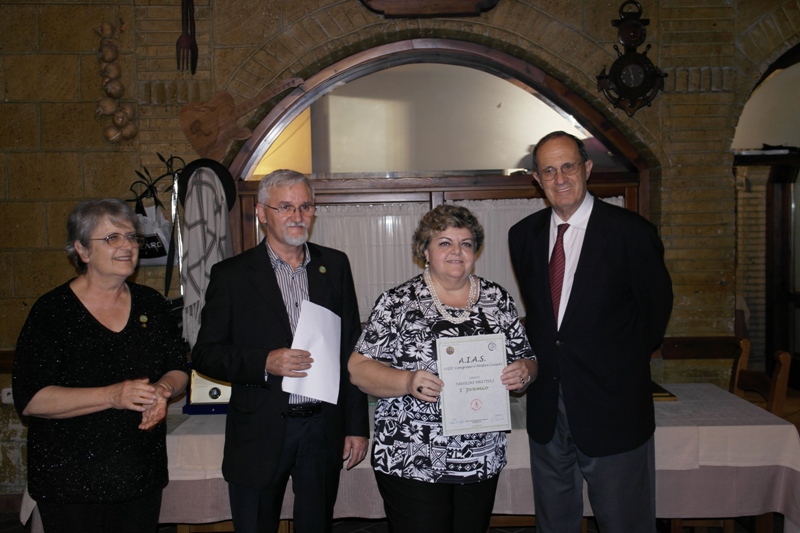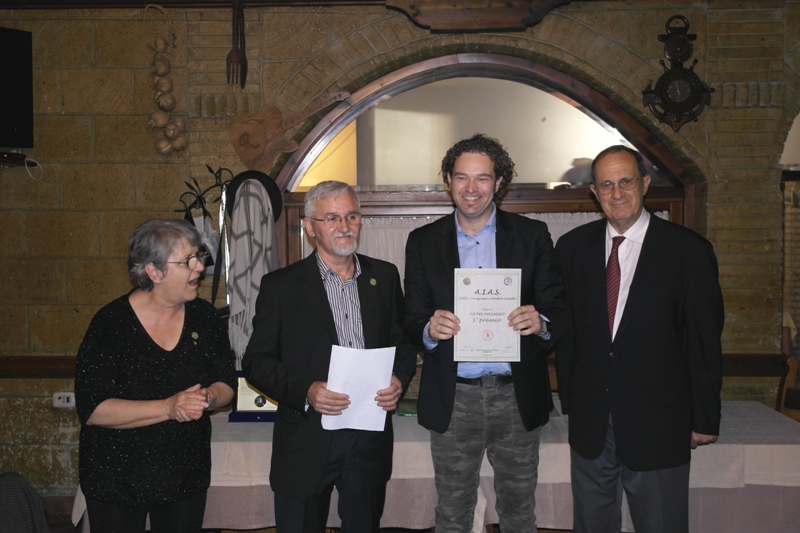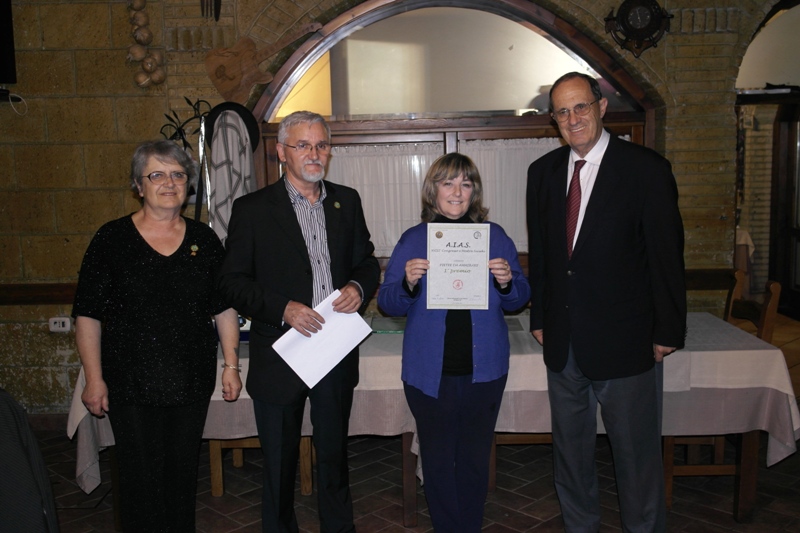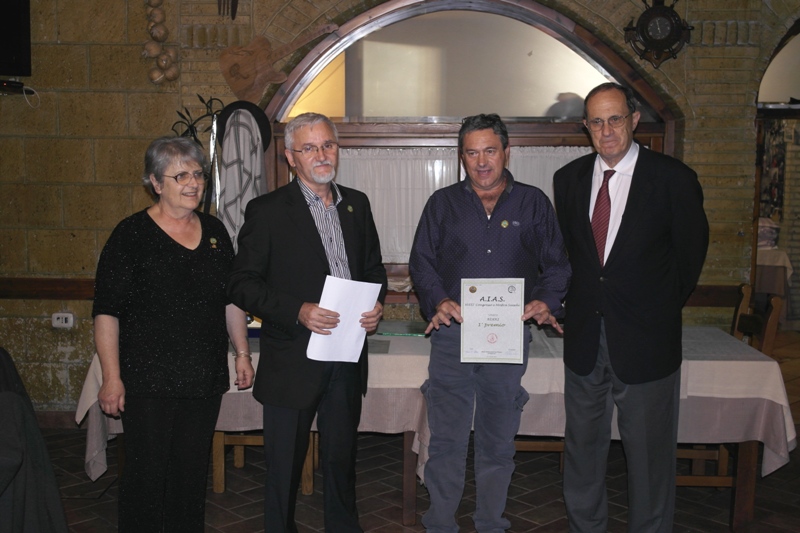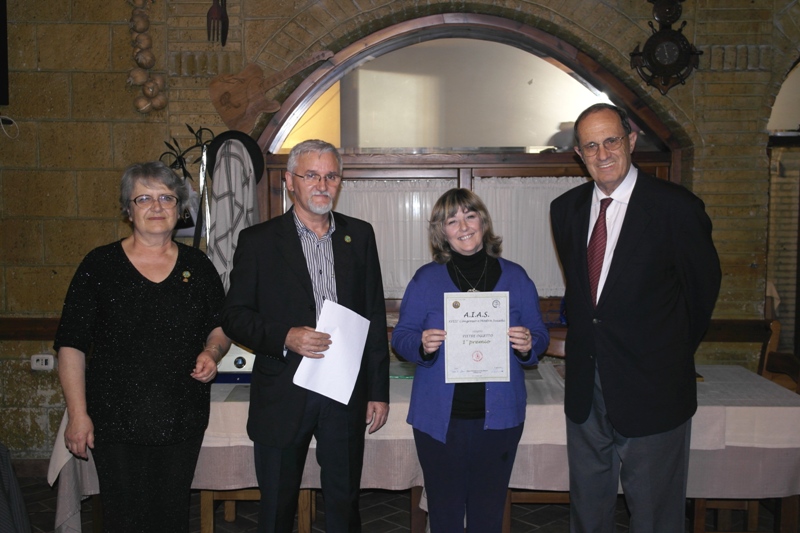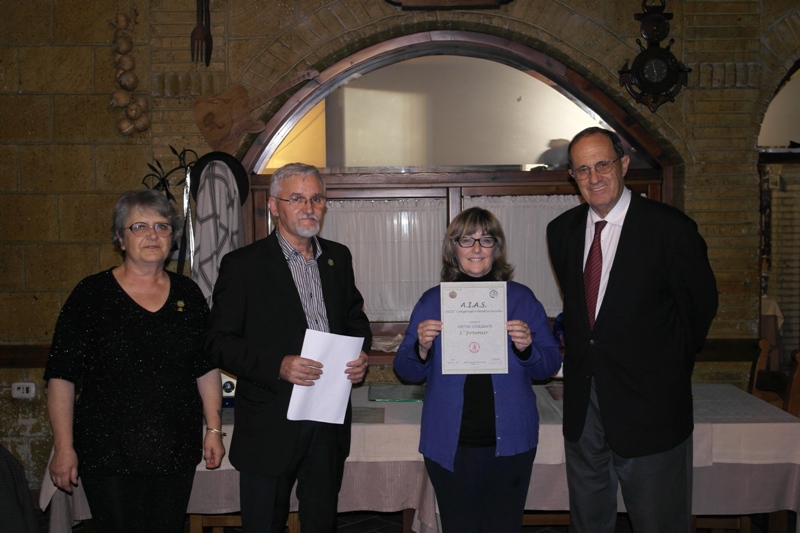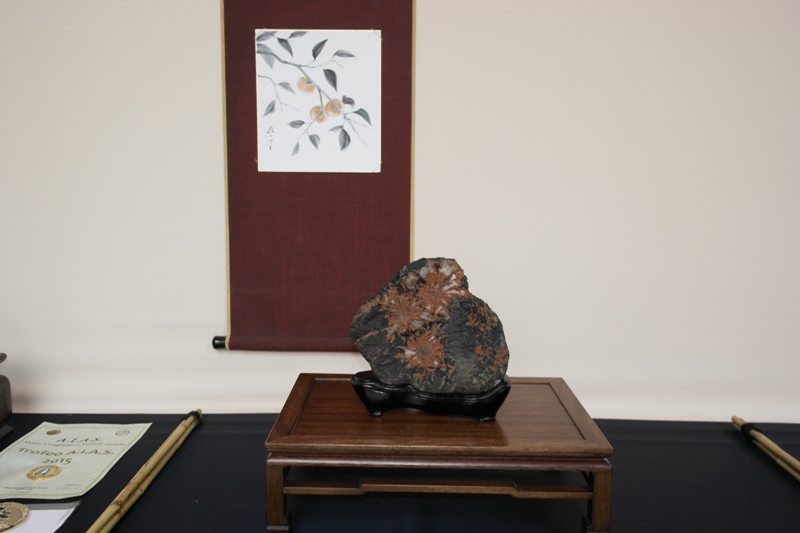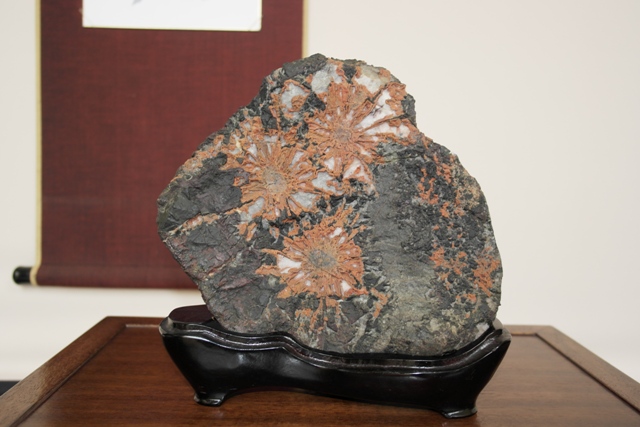|
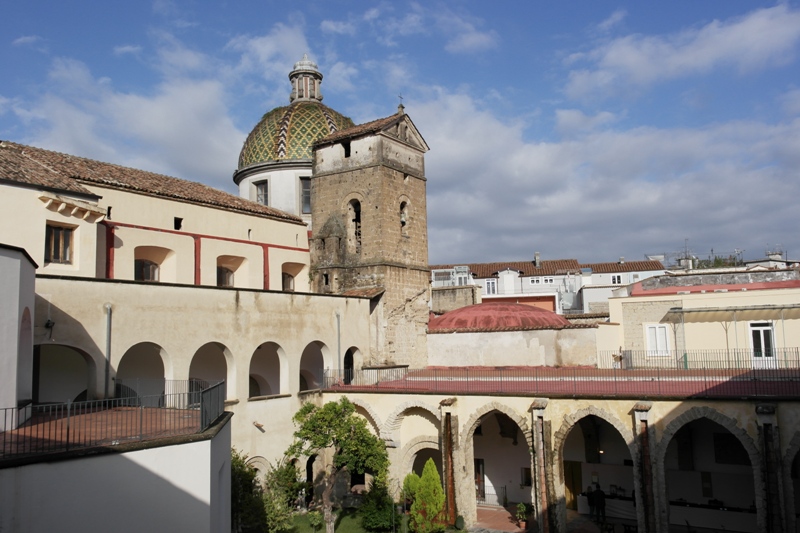 |
|
October 10th-11th 2015
National Suiseki Exhibition
Monumental Cloister of Saint Francisco
Via San Francisco d’Assisi – Aversa (Caserta)
XVIII National A.I.A.S. Congress 2015
|
|
|
Report by Mrs.Daniela Schifano - Photo by Mr. Carlo Laghi
|
|
Another historical moment of our Italy has been the venue of the annual AIAS members’ meeting : the Monumental Cloister of Saint Francisco, in Aversa, where since the beginning of 1800 the enclosed Clarisse nuns have lived their existence devoted to God and that still offers a corner of peace and meditation. The Napoli Bonsai Club which has this year organized the National A.I.A.S. Congress has had a winning idea: ample and peaceful spaces have been offered , framed by medieval frescos , wrapped by a cosy and discreet atmosphere. It can appear an heresy but… the place seemed to me so in accordance to a suiseki exhibition to involve me in not much orthodox comparisons, between the spiritual meaning of the cloister in the religious architecture and the need of the modern laic man to devote part of his days to the silence and to the listening , and of how much the art of suiseki is one of the so many ways which stimulates the introspection, the meditation and the concentration.
|
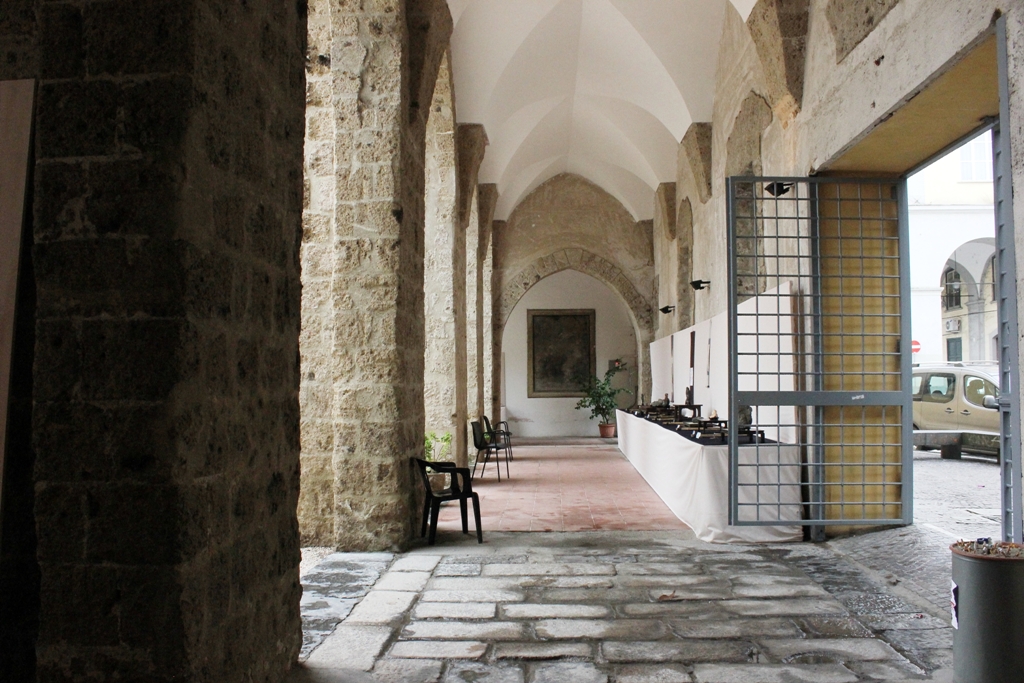 |
|
|
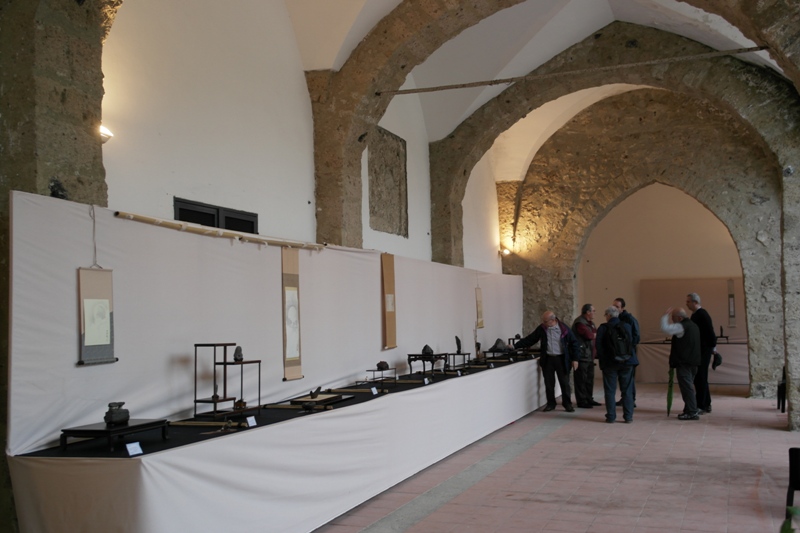 |
|
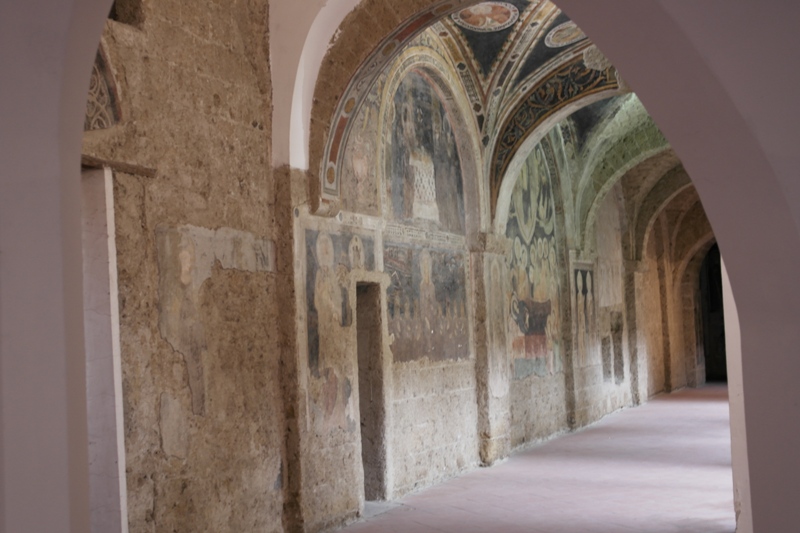 |
The entrance gate divides two worlds…
|
|
|
The members ….meditate and exchange opinions
|
|
The colonnade with the wonderful medieval frescos |
|
|
Some story…. The monastic Venue of Saint Francisco rose around the 1230 by the noblewomen of the Rebursa family , who used some of their houses as a pious place of retirement for follower women of the Clarisse Rule, at the pre-existing church of Saint Francisco d’Assisi. The venue was restored more times , the present church is in baroque style and the cloister remain the sole witness of the original Romanesque appearance of the venue. Very fine also the superior chorus of the nuns , with a remarkable example of coffered ceiling , unfortunately abandoned and falling but which can be admired by a grating . With the laws of convents abolitions of the 1809 a great part of the buildings was expropriated , and were used as public works.
|
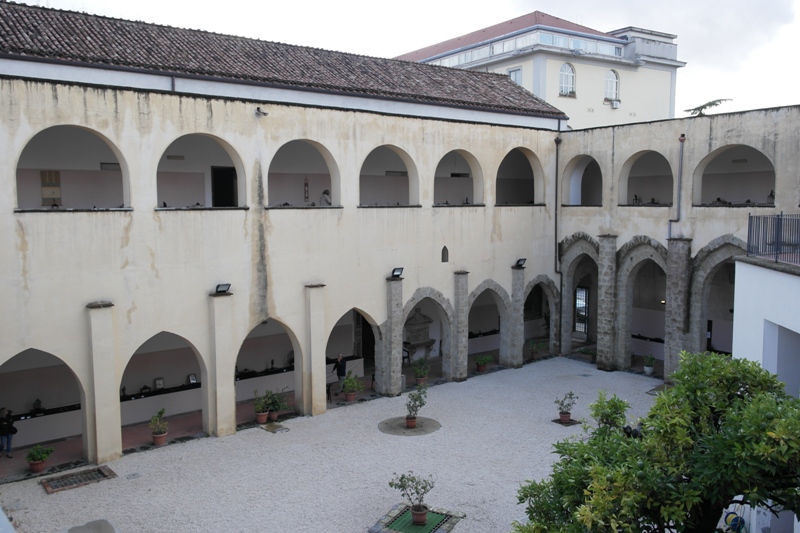 |
|
|
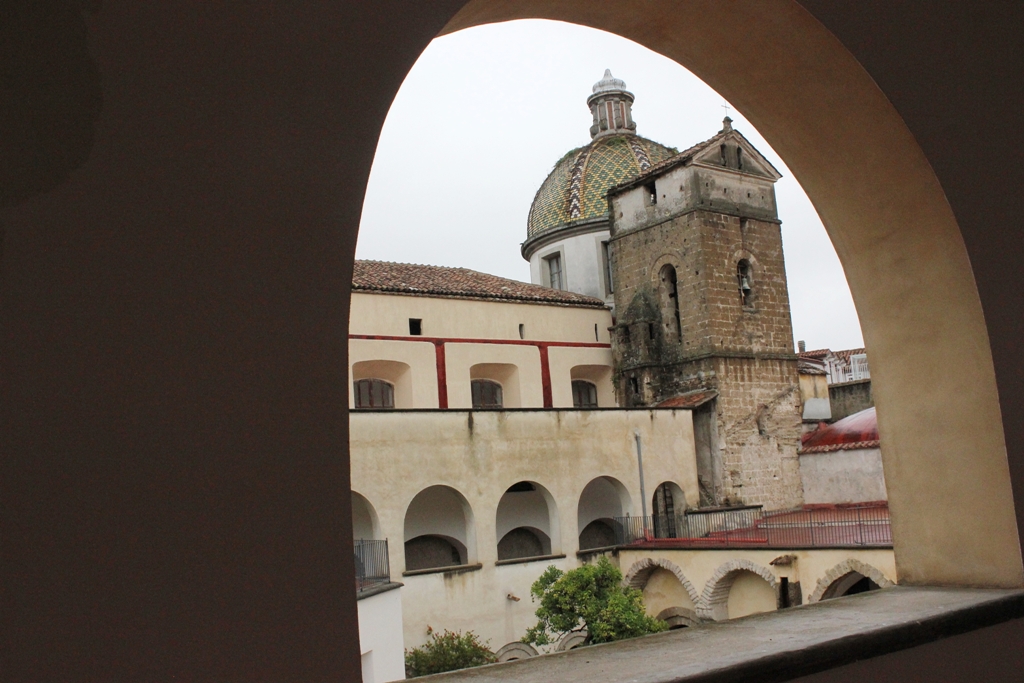 |
|
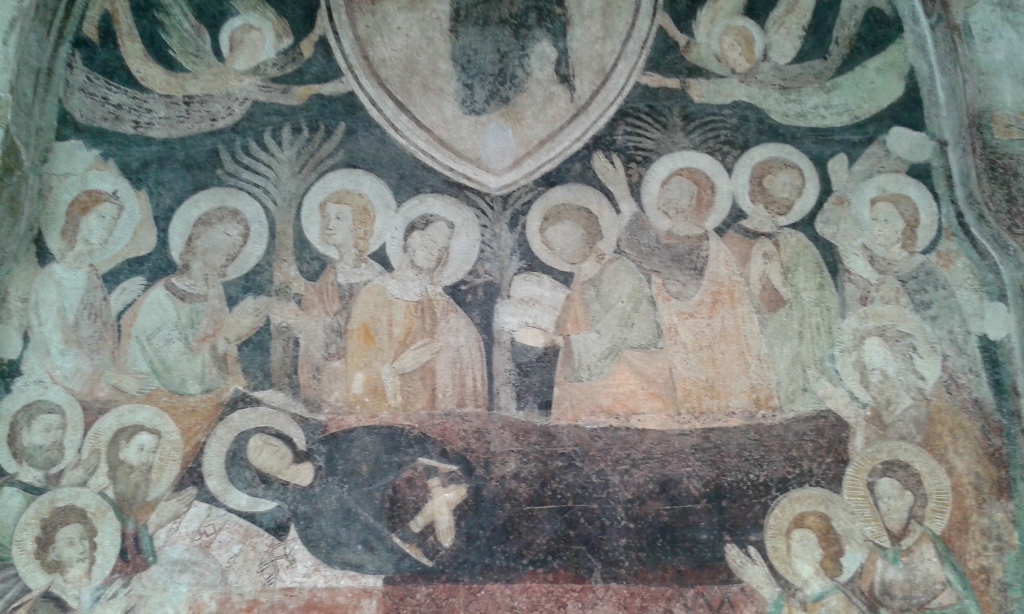 |
The cloister
|
|
|
The glazed cupola of the Saint Francisco church |
|
A particular of the frescos
|
|
|
The suiseki exhibited in the six categories in contest were 82 , more 4 out of contest. Have taken advantage of the open gallery at ground floor and at first floor, with 1,20 linear mt. at disposal for every stone, as it had been guaranteed by the Board member Mr. Carlo Scafuri , president of the Napoli Bonsai Club , during the members Assembly in Rimini , as indispensable condition to assure a good expositive quality. Then an elevated number of stones in contest, an excellent participation of members and to end an expositive space which has allowed , thanks also to the high backgrounds, to use kakejiku of remarkable dimensions : with these preliminary remarks , the result has been an exhibition of very good quality and at same time of considerable numbers.
The event has been sponsored by the BCI , the NBSKE , the UBI and the IBS. But it has been an unforgettable convention over all for the ample cultural proposal which has enriched the exhibition : the lectures of the sole judge President of the B.C.I. Mr.Thomas Elias have followed one another that of the honorary President of the Napoli Bonsai Club Mr. Antonio Acampora and of the B.C.I. Director Mr. Massimo Bandera.
But it is not all: the presence of Mr. Sergio Biagi and of Mr. Andrea Terinazzi has allowed us to understand the building techniques of the bronze doban of Sergio and of the tempai of Andrea and to know the professional way which has lead them to be the sole Italian artist in these fields.
Furthermore: a photographic contest advertised by the Flegrea Photo Association, on the theme “The Mountain” has had its final moment during the Congress, with the awaited awarding and with the projection of all the photos in contest.
But it is not enough ! The personal inks of Mr. Sandro Segneri accompanied by the haiku of Mr. Tiberio Gracco, and by the photographic works of Mr. Paco Donato, joined with the poetries of Mrs. Yurika Nakaema have extended the breath of an event not limited only to the stones
|
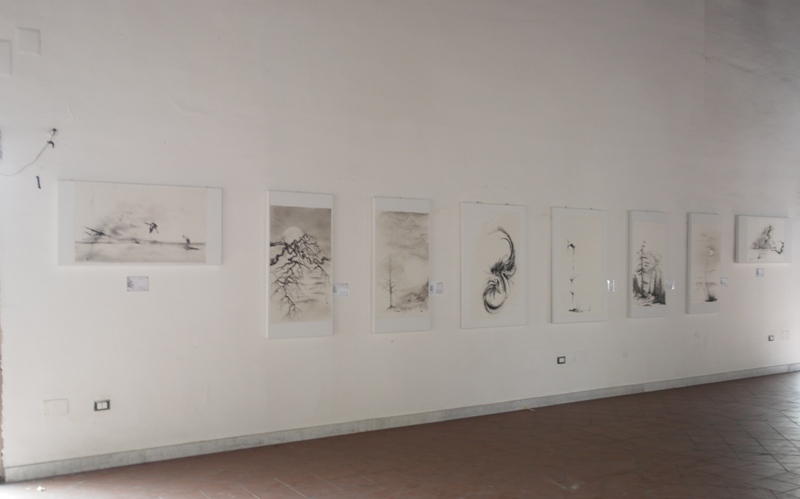 |
|
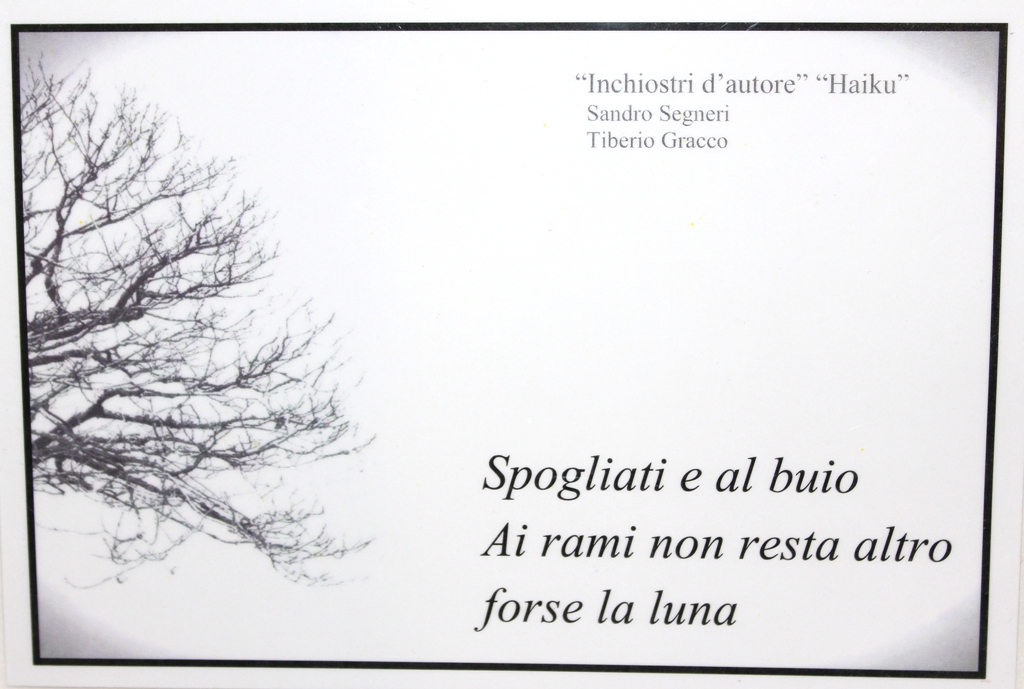 |
|
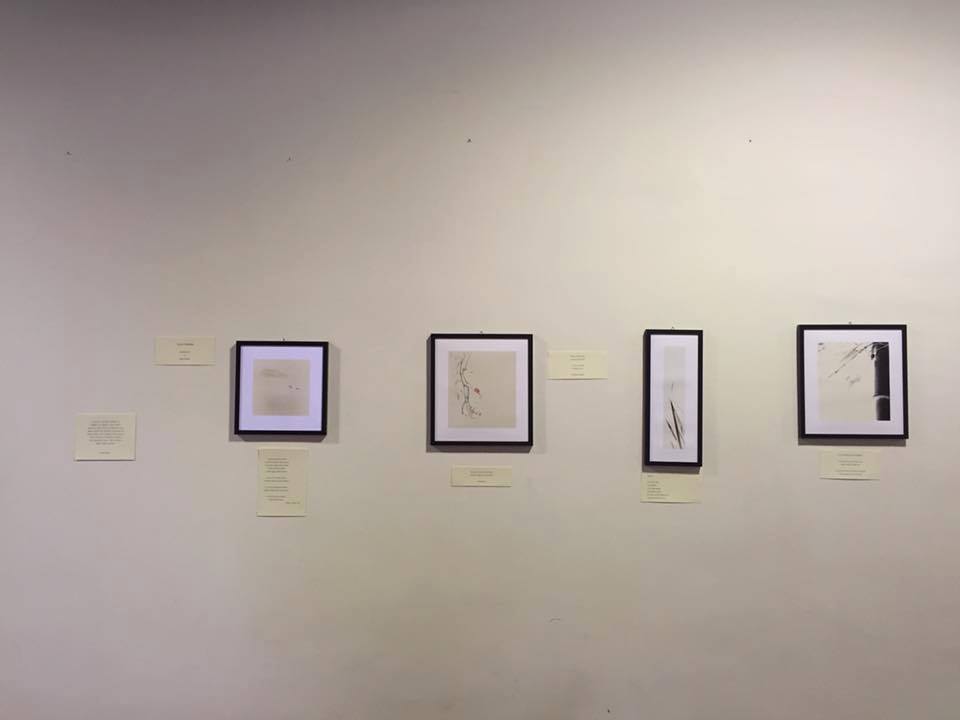 |
| The inks of Mr. Sandro Segneri |
|
One of the Mr. Tiberio Gracco haiku |
|
The photo gallery of Mr. Paco Donato , a new member from Rome |
|
| We welcome the new members Mr. Andrea Terinazzi, Mr. Paco Donato, Mr. Cosimo Pepe , Mr. Paolo Dassetto and to the Bonsai Club of Avellino, which just in Aversa have started their way in the Association. |
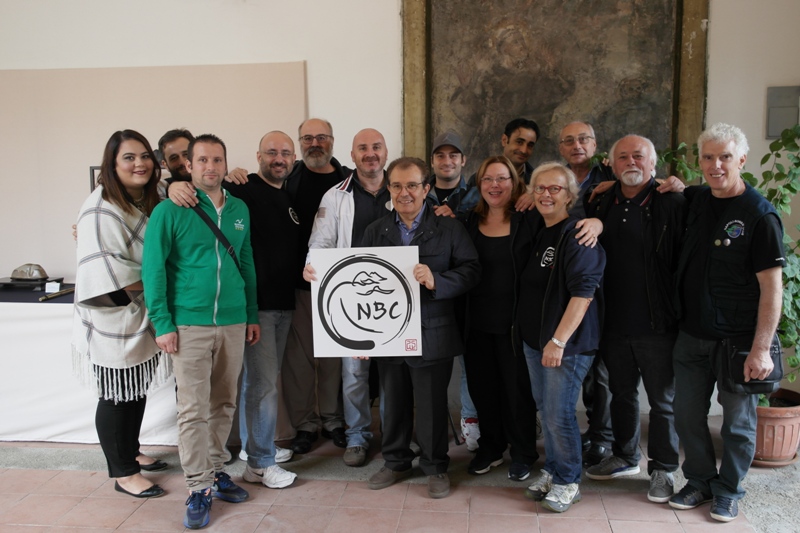 |
|
And here are the authors of this wonderful Convention : the members of the Napoli Bonsai Club, whom in addition to their professional competence have offered us warmth, welcome and friendship! As it is in his style , among his friends, we cannot but to record Mr. Carlo Scafuri , President of the Club and AIAS Board member, the propelling engine of this Congress and of the so many initiatives which he has finally wanted and carried out. What to say ….. a plate is not sufficient and from these pages we thank all with our hearth. |
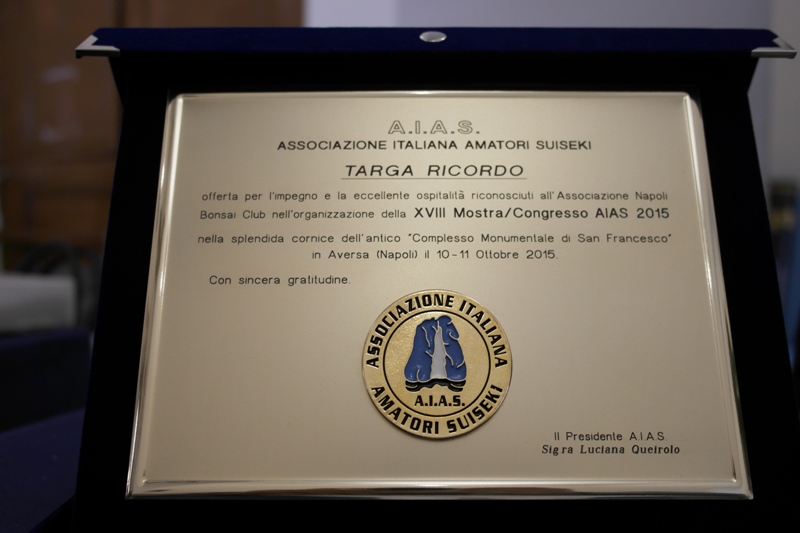 |
|
|
The only unfavourable aspect of this Convention (well then yes…) has been the rain, continuous, flooding, at intervals violent , which only in the Sunday afternoon has given us some truce.
|
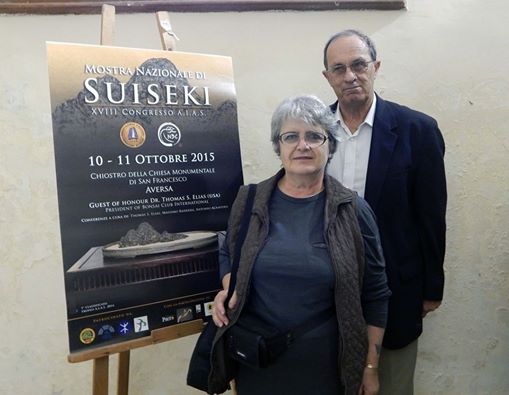 |
This year, a really extraordinary judge and a lecturer Dr. Mr. Thomas Elias , President of B.C.I. Tireless promoter of the stone appreciation art , whether Chinese, Japanese or American, he has been Director of the National Arboretum of Washington DC, and has worked and travelled in China and Japan for more of thirty years . Together with his wife Mrs. Hiromi Nakaoji , he is the author of most important books on the appreciation of Asian stones. |
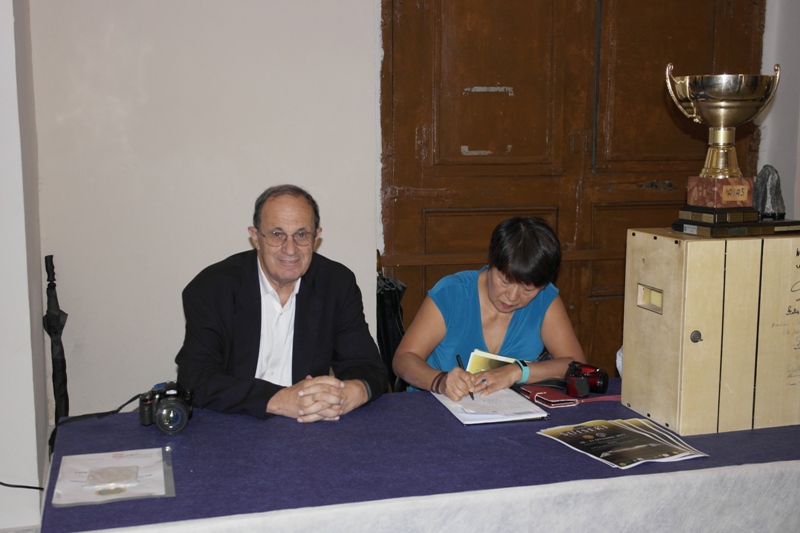 |
|
| After the opening ceremony on Saturday morning , the Congressional works have soon started to get to the heart with the lecture of Mr. Thomas Elias with the title “Beyond Suiseki”. |
|
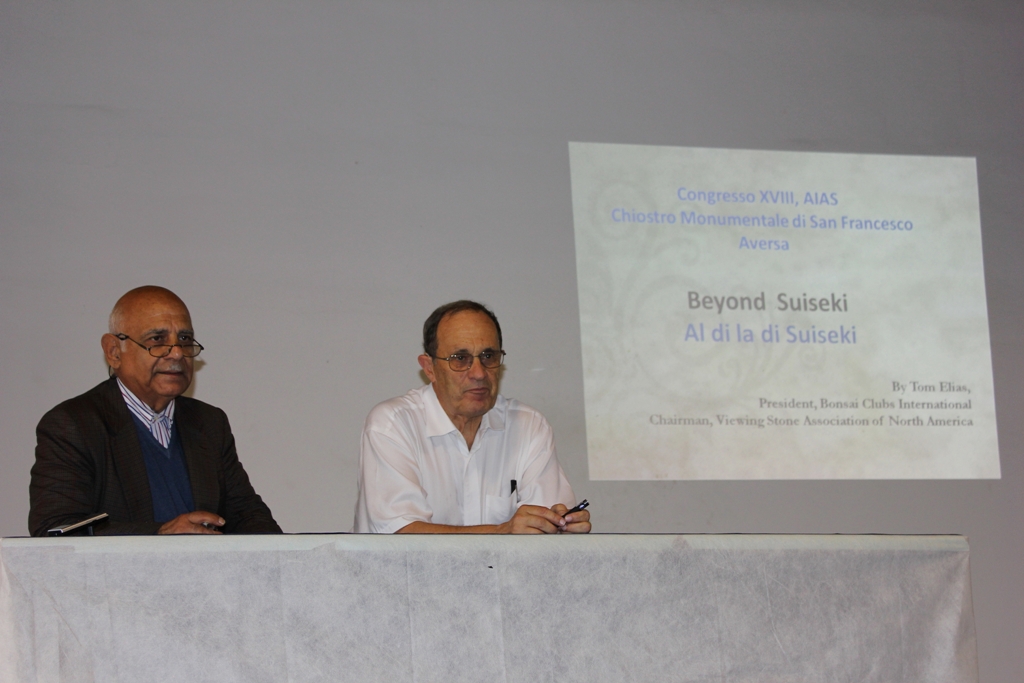
|
|
The approach utilized by Mr. Elias has proposed a novelty to offer again: in addition to the classical slides , translated in Italian for a better comprehension, some of which asked questions to the audience, placing the assumptions for a lively and stimulating comparison …… over all among the members !
|
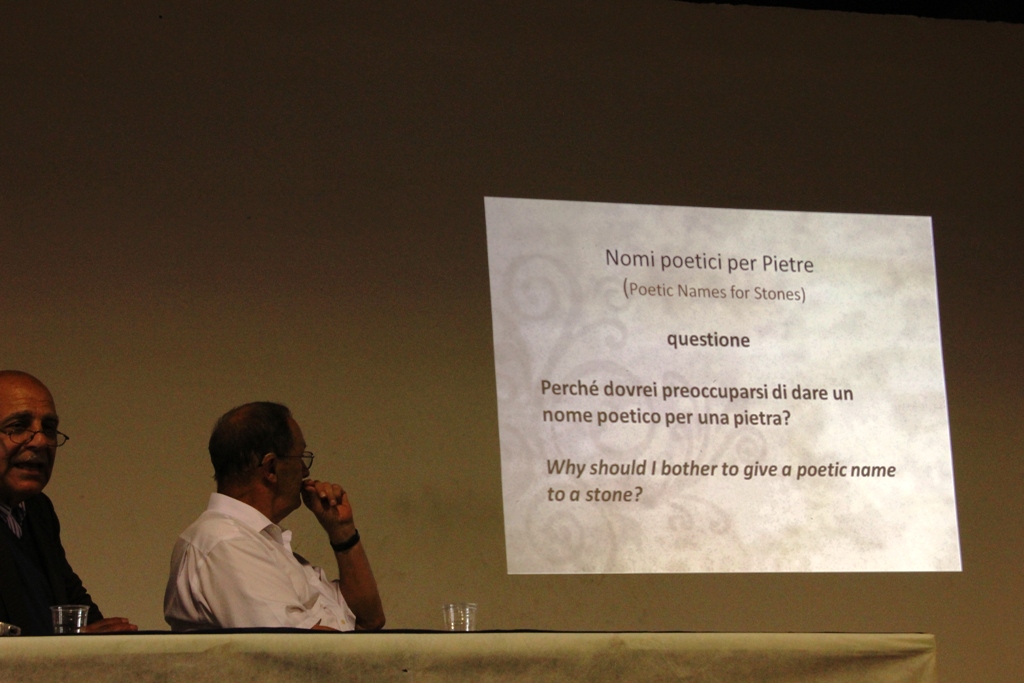
|
|
|
On Saturday afternoon , the lecture of Mr. Antonio Acampora has concerned another important theme, that of the harmonious display of a suiseki , according to the school of Keido.
|
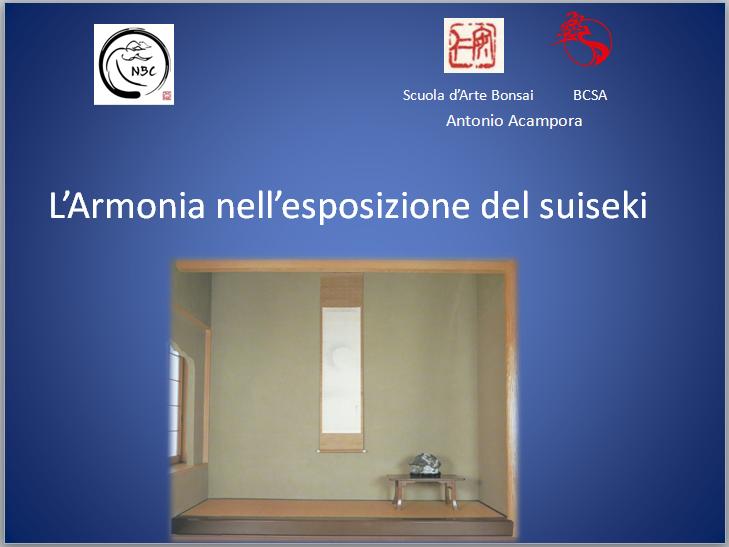 |
|
|
|
“It is more easy to appreciate Bonsai than Suiseki. A Bonsai is living and changes every moment , it has it different beauty in every season, and in this way we learn to appreciate the nature.” A stone instead is immovable , quiet and everlasting . Everyone can make reference to the colour or to the shape of the stone since the moment it can be seen or touched, but the stones are not Suiseki , they become it only when someone intensely watches them, admires them and feels something , something which is in the air and in the magic which belongs to that person only.”
(From the Antonio Acampora lecture)
|
|
|
Without a moment of pause , the program has brought us towards the members’ Assembly , where is has been proposed and voted the unification of “Biseki” and “Patter stones” categories, on account of the low number of stones enrolled in these categories . The Assembly has approved the proposal therefore at next convention the categories in contest will be five. The assembly decision of Rimini , which has ratified to register one sole stone for category has however brought good results , by reducing the stone registered in the category of “Landscape stone” in favour over all to the “Object Stone” category.
As always the most waited moment arrives, the gala dinner, the awarding and the amusing lottery and neither the pelting rain could arrest the pleasure to stay together , with the legs under the table, as the friend Mr. Carlo Laghi says.
In addition to the prestigious Trophy and the A.I.A.S. category Awards , has been assigned the B.C.I. Award , the I.B.S. Award and the U.B.I. sponsor Plate judged respectively by the B.C.I. President Mr. Thomas Elias, by the I.B.S. Istructor Mr. Ezio Piovanelli and by the U.B.I. Board member Mr. Antonio Conte. Here are some photos of awarded ,among the astonished and the satisfied.
|
|
|
|
|
On Sunday morning , survived to the torrential rain water we were ready to face the fed program : we start with the much expected lecture of Mr. Massimo Bandera, concentrated on one of the three volumes published in 1986 by the founder of the Keido School, Mr. Ichiu Katayama, devoted to the exhibition in a tokonoma of bonsai, of suiseki and of Kusamono. To better illustrate the tokonomas of the volume devoted to suiseki , the engagement of Massimo has been impressive: the volume in facts has the test in Japanese and Massimo has done his best to have them translated in Italian. The oratorical glamour of Massimo Bandera, whom I should stay listening for hours for the extent of his knowledge , has done the balance, capturing the full attention of the audience.
|
|
“The concept through which to hear the poetry of the nature goes through a stone, exactly like with the bonsai; however the bonsai grows every day showing entirely the season with his growing, the flowers , the fruits , the cold ect. an evident beauty. The suiseki does not change in decades nor in centuries , it does not change the shape, the substance , the colour, therefore it has to be excellent from at once, and from the four facades which have to be balanced. Also the base shall have a certain harmony , thickness and shape
YOO-seki , where YOO is to nourish, as mochikomi for the bonsai , a daily action , namely to touch the stone , so the beauty is drawn out.. For the suiseki people should not enjoy of the shape only but also of its fitting where people can really understand and enjoy of the secret beauty of the stone and taste its extreme poetry.
|
|
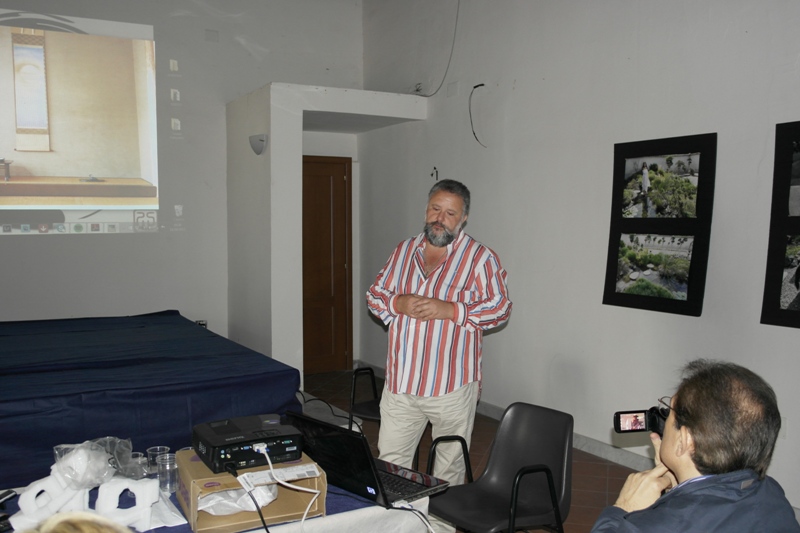
|
|
For this also the paintings are important, the suibans, the sands and one should have knowledge of its element and to be able to display in order to create composition which let people feel every element of the nature in a stone. With this book I comment the way to fit the tokonoma following the rules of suiseki.“
|
|
| In addition with the lecture Mr. Massimo Bandera has honoured the Convention exhibiting out of contest a precious and ancient “Sun Flower stone” displayed in the Fuji Sato Museum . Its name is “The garden of the mountain among bonsai and suiseki” and measures 22 x10 x 20 cm. . It belonged to Mr. Tatsuyuki Ishiwatari and was published as awarded on the November 2003 number of the Nippon Suiseki Association. |
|
|
Through the education of Katayama-san , we have learnt how it is important to create a setting as much as adherent to the stone and to its poetry. But we all know how difficult it is to find the suited objects to accompany our stones, up to the point that sometimes one is prepared to renounce.
The meeting with Mr. Sergio Biagi and Mr. Andrea Terinazzi, also if they could not exhaust the argument, has furnished some practical and prompt solutions to our exhibition problems. |
|
Mr. Sergio Biagi since many years creates tables for bonsai and suiseki in addition to be an expert bonsaist. Paying attention to the demand of his friends keen of suiseki, he has recently tested himself in the sector of doban production , the bronze trays, of very hard finding, on which to exhibit a suiseki.
The synergy with the Pietrasanta foundry, which have a considerable experience in the sector of bronze productions works , Sergio has started from a wooden model projected and realized by him, for after testing in foundry the various techniques which lead to the finished object, patinated or not . The advantages are various : surely the cost is lower to that of Japanese brothers but over all people have the possibility to obtain the measures and finish fit to the stone and to the displaying season.
|
|
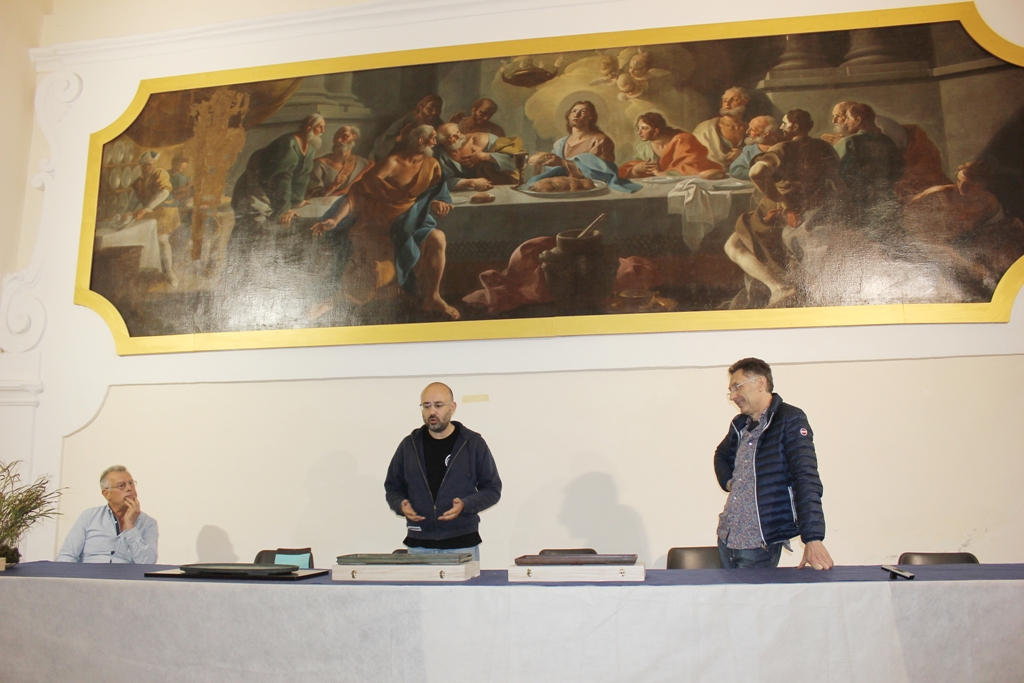 |
|
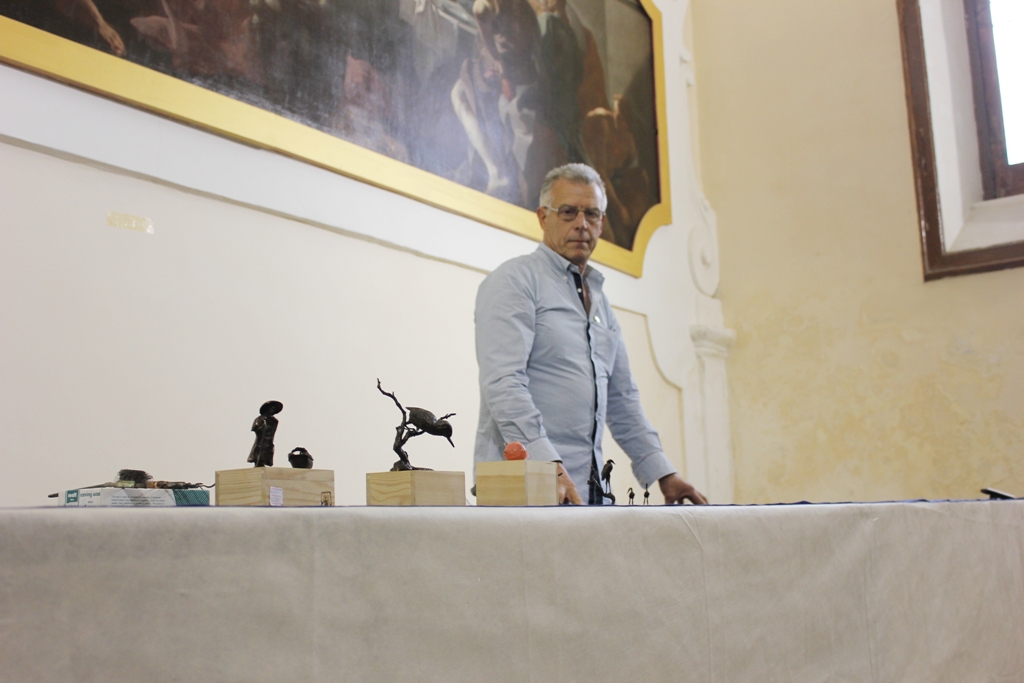 ![]() |
|
To follow, with Mr. Andrea Terinazzi the problems relating to the tempai, small bronze object, also them of Japanese origin, which in an exhibition can form the accompanying object in place of the shitakusa.
Andrea has put his working experience as goldsmith to the service of the creation of these small objects. Starting from a stamp and after adding the smallest particulars he realizes these small masterpieces of which what hits most is the expressivity . Andrea has in fact kept himself bound to explain that some time the creative cue starts from the observation of realty, while at times, a purchaser asks to realize a well determined article .
Also in this case the advantage is that to have under home or about an artist who can give life to what is necessary for an exhibition : in fact here is no end to the varieties of objects among which to choose, always in respect of the Japanese tradition.
|
|
|
Early in the afternoon the last much expected didactic moment of the Congress : the comment on exhibited suiseki by the judge Mr. Thomas Elias. His availability has been praiseworthy: he has commented all stones in exhibition , giving a sense to exclusions and awards, evidencing deficiencies and merits and giving a score to every stone, a score from 1 to 10 , a direct and prompt system to evaluate a stone in its whole. His preliminary remark , in any case, has been a reason of great satisfaction : he said to be favourably impressed by the quality of stones, much higher to that of other exhibitions abroad , and from the daiza manufacture built with a hard wood which in America is not used.
In conclusion , using his words: “ An exhibition of very high level”.
|
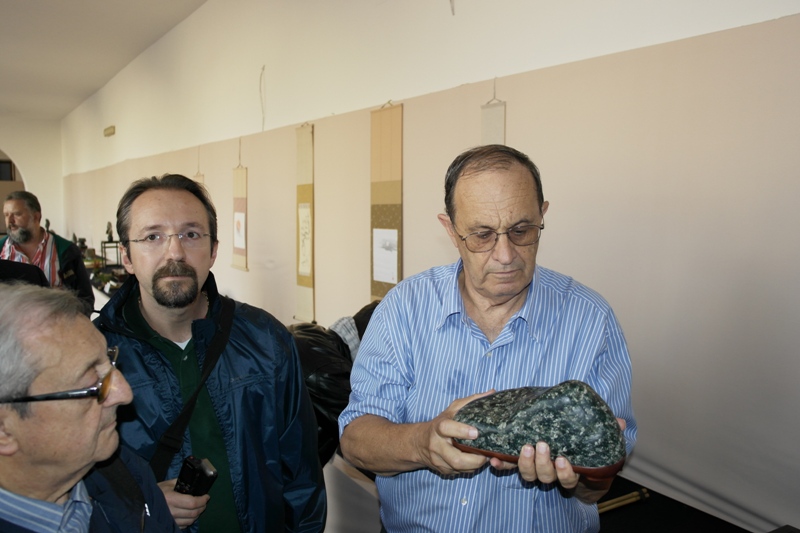 |
|
The member Mr. Pietro Prudentino is waiting for the evaluation of his own stone , while Mr. Elias is watching it carefully.
The comprehension of the judge’s words has been possible by the punctual translation made by the member of the Napoli Bonsai Club Mr. Arturo Lazzaris whom we thank for his very good knowledge of the English language and for his availability.
|
|
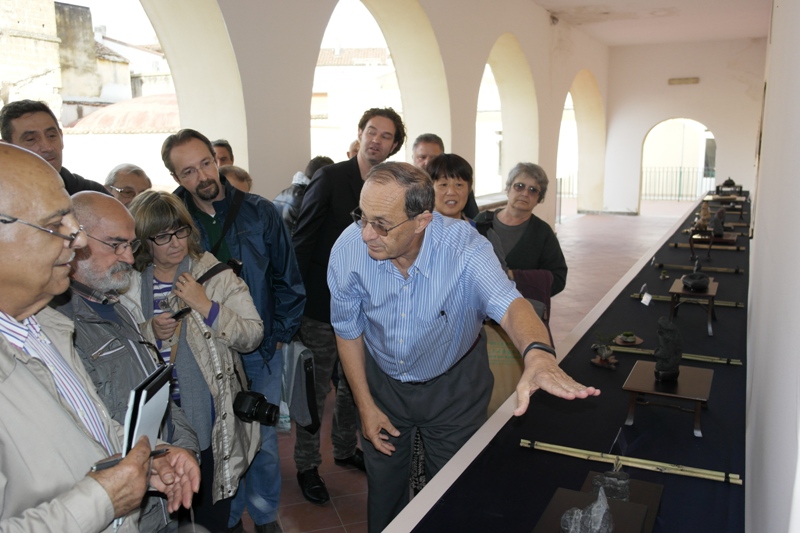 |
|
|
We have learnt much in this Congress, perhaps one of the best successful in absolute. As conclusion , I think is right to mention the words of Mr. Sergio Bassi, which are also mine and I think of all members:
“This year I have avidly looked for and found the cues , suggestions, emotions from your stones and from your fittings which have enriched my small personal education. For people , as me, looking for this , I think that the exhibition was overflowing of notions and if I have found them , it will say that it was sufficient to look for them and that they were at disposal within everyone. I thank you all whom I embrace one by one, I thank you and I reserve since now the rendezvous for the next Congress”.Almost boxes and thoughts have not yet been put away , and we are already projected towards what will offer us our next meeting ! Therefore good-bye soon, after all only one year is missing !
|
| Daniela Schifano |
|
As always I close with a dutiful bow ….. the classic acknowledgement to the winning stone of the A.I.A.S. Trophy 2015, which has been granted to the landscape stone of italian origin exhibited by the our President Mrs. Luciana Queirolo.
|
| A.I.A.S. Trophy 2015 |
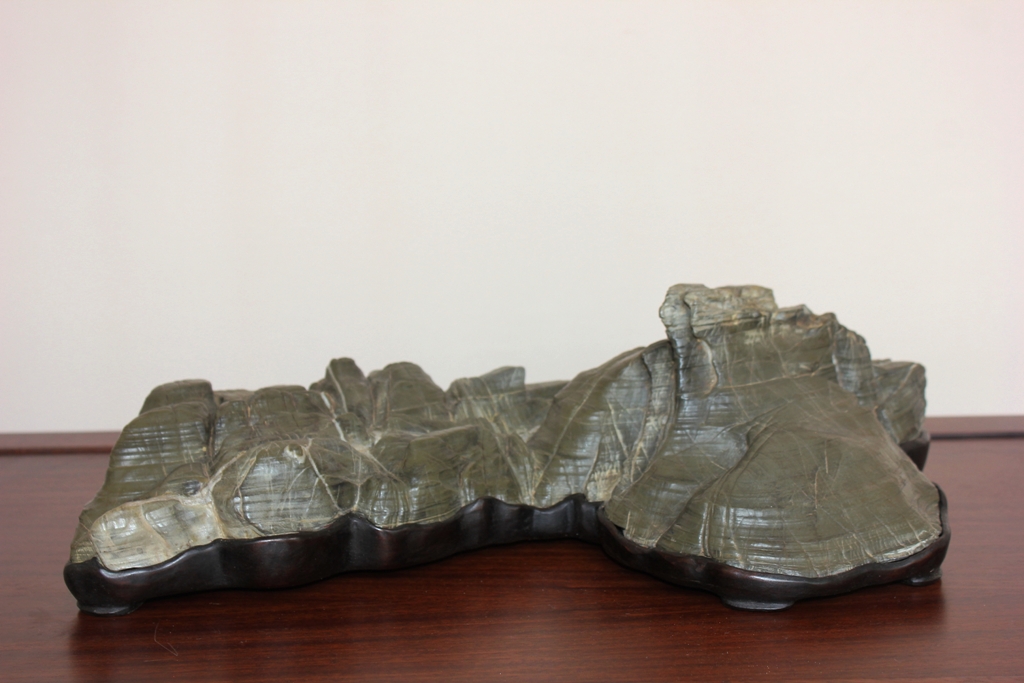 |
|
"Promised land"
Landscape Stone
of Mrs. Luciana Queirolo
|
|
| |
| The suiseki who obtained the prizes for Category and UBI, IBS and BCI awards were: |
| "Landscape Stones" Category |
|
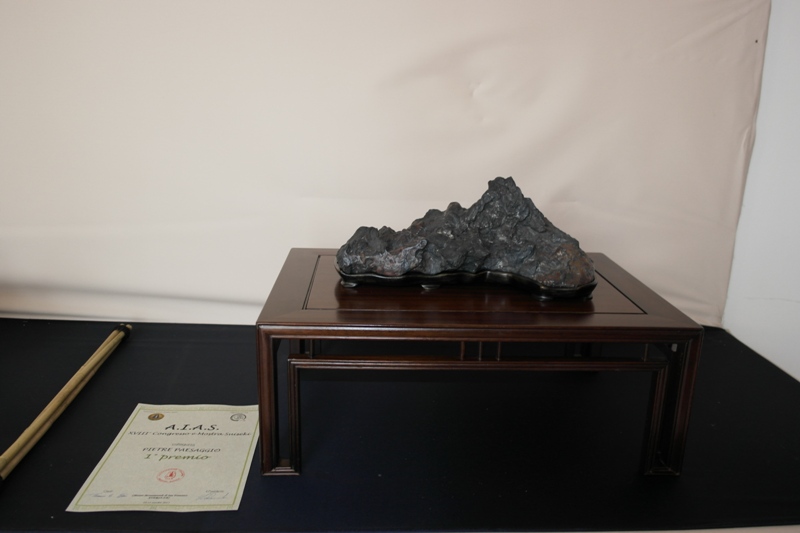
|
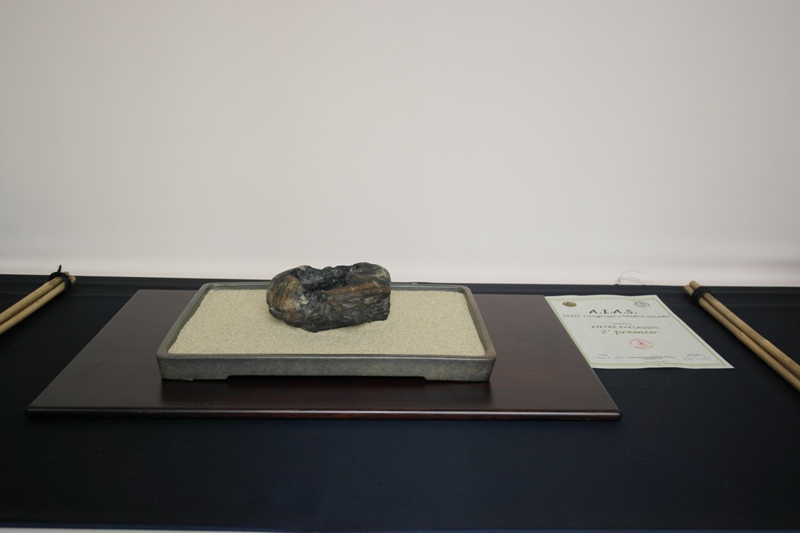
|
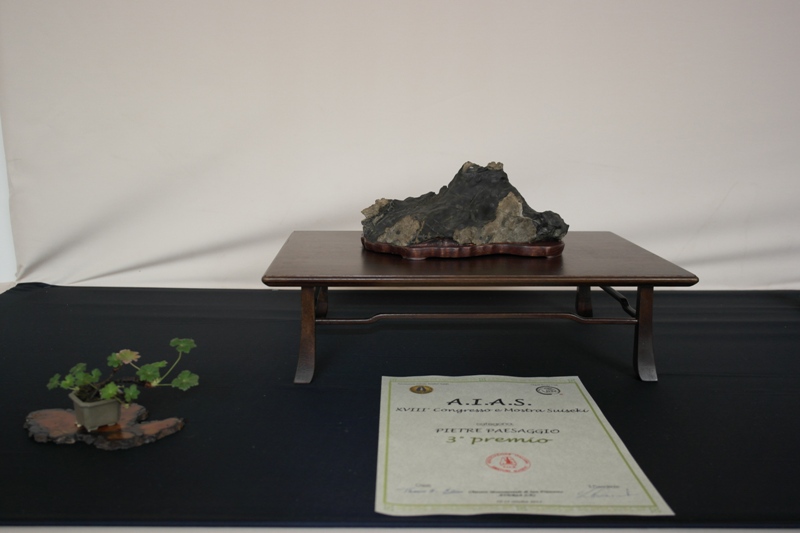
|
|
1° prize to
Mr. Igor Carino
"Kamui-mintara Garden of the divine"
Japan
|
2° prize to
Bonsai Club Castelli Romani
"Autumn mirror"
Japan
|
3° prize to
Scuola Suiseki Do Groane
Without name
Lombardia
|
|
| |
| "Shelves" Category |
|
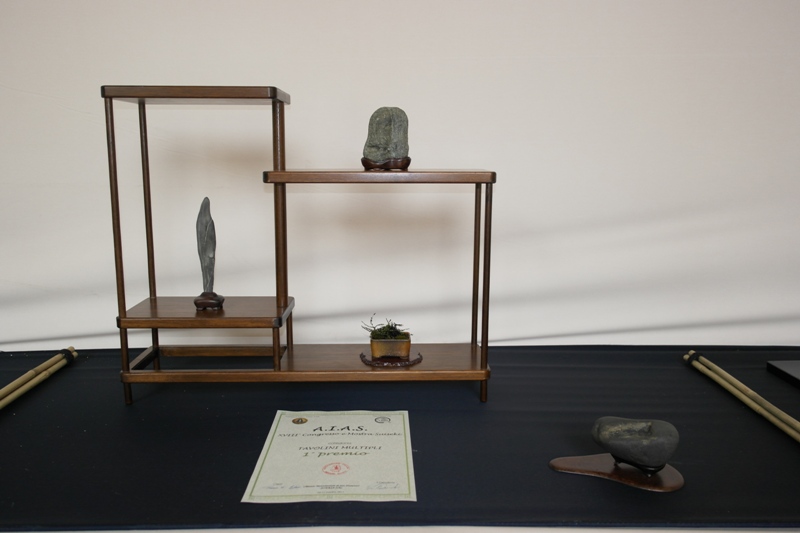
|
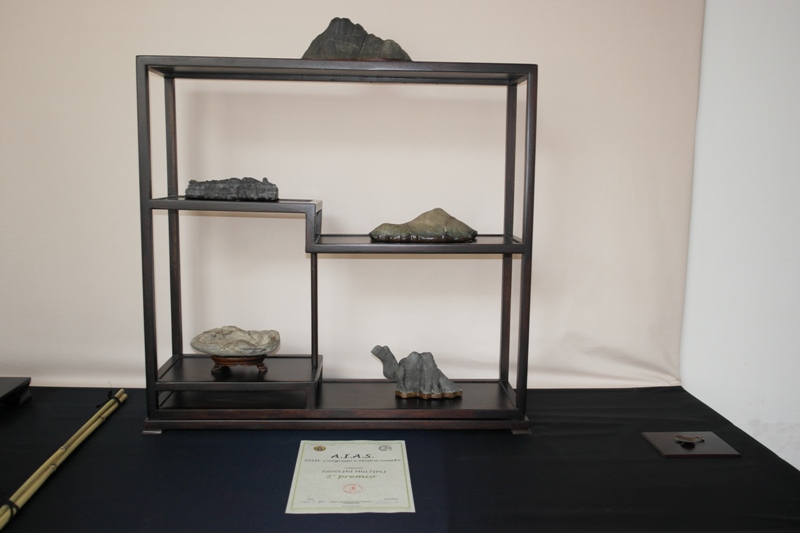
|
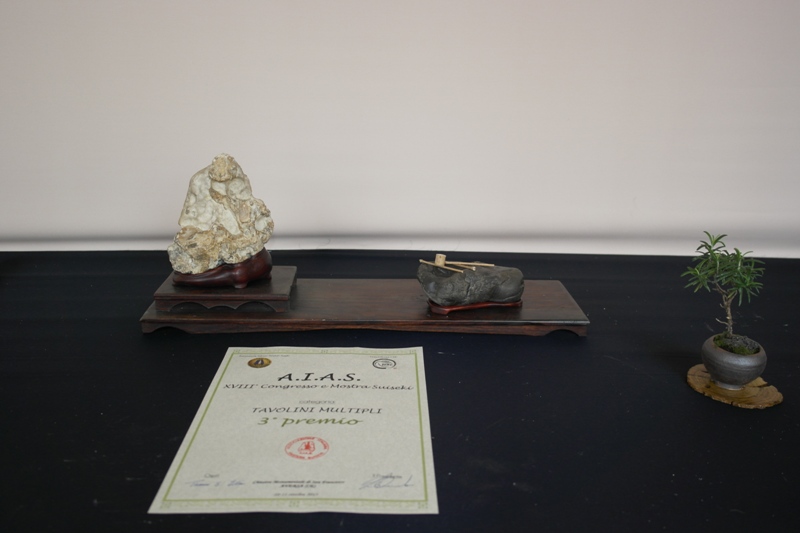
|
|
1° prize to
Mrs. Laura Monni
"The singing of water for Benten"
Liguria - Japan
|
2° prize to
Mr. Sergio Bassi
"Last beetle flight"
Tuscany - Liguria
|
3° prize to
Mrs. Laura Segna
Without name
Lombardia
|
|
| |
| "Object Stones" Category |
|
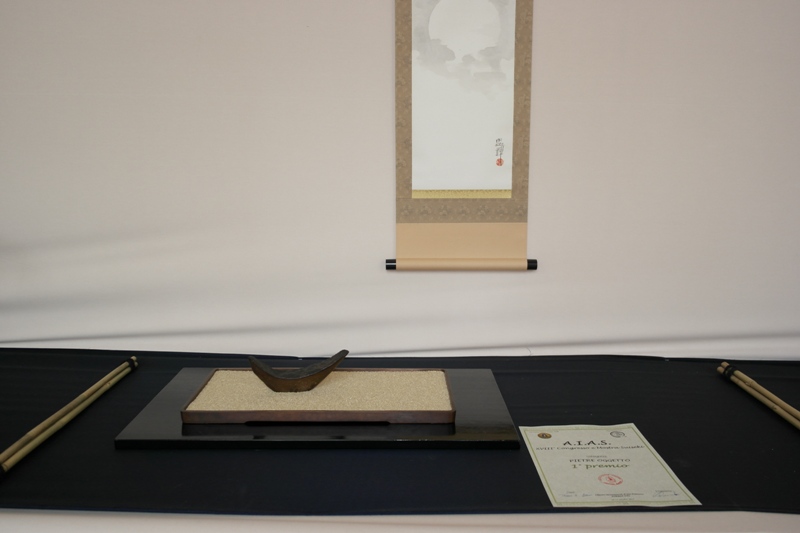
|
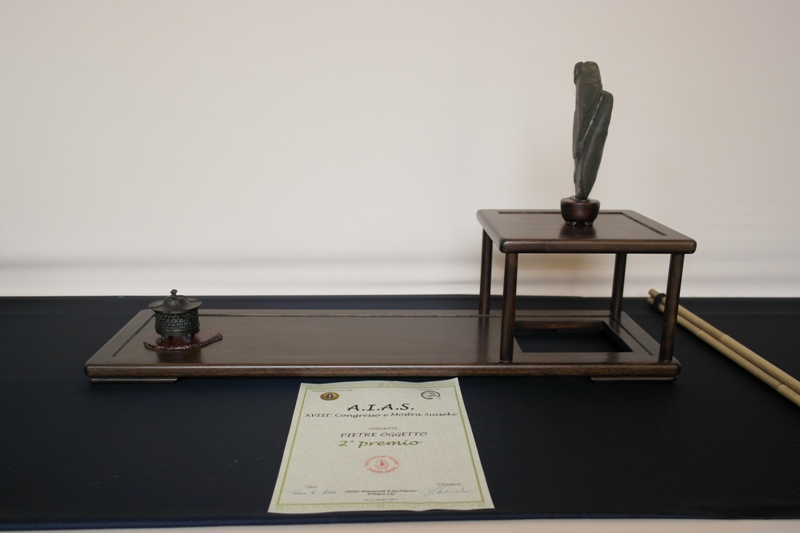
|
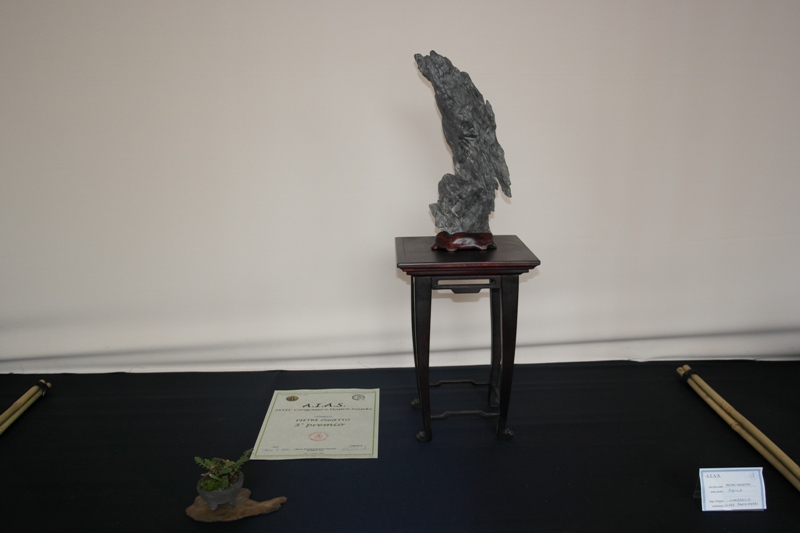
|
|
1° prize to
Mrs. Daniela Schifano
"Wave of moon"
Japan
|
2° prize to
Mrs. Pina Sorrentino
"Geisha"
|
3° prize to
Mr. Ulisse Maccaferri
"The eagle"
Lombardia
|
|
| |
| "Biseki" Category |
|
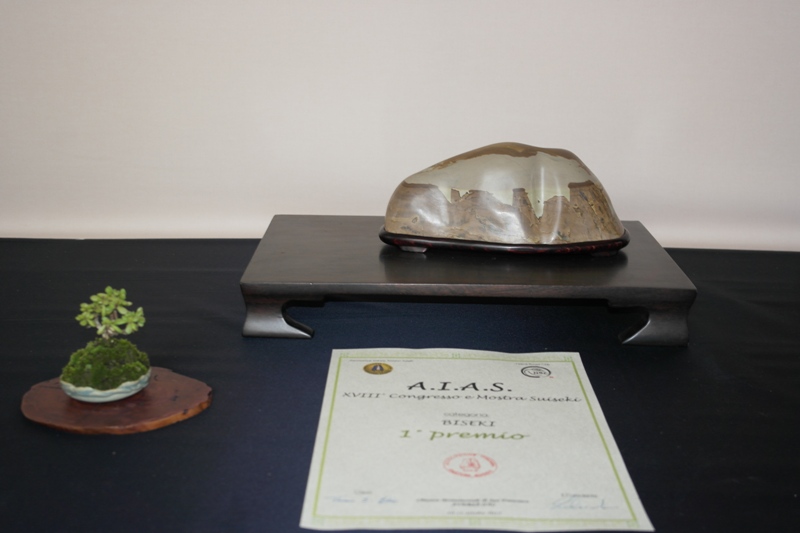
|
|
1° prize to
Mr. Giuseppe De Vita
"The ruins' stone"
Tuscany
|
|
| |
| "Pattern Stones" Category |
|
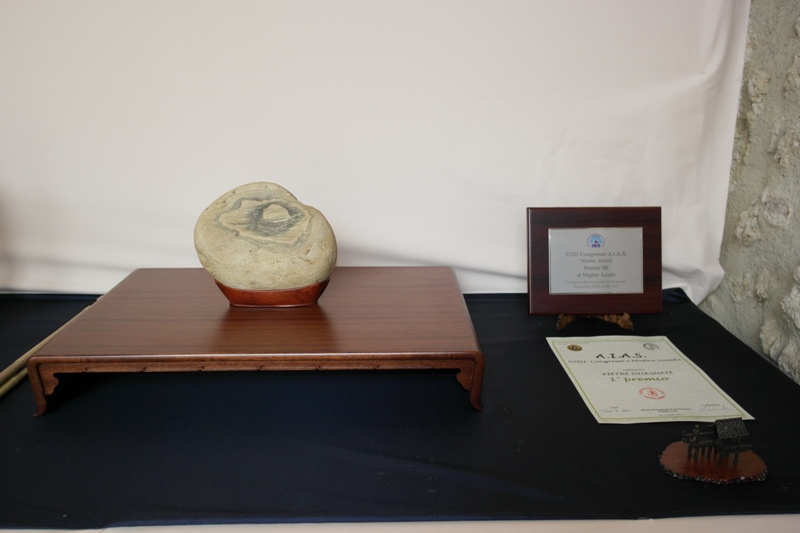
|
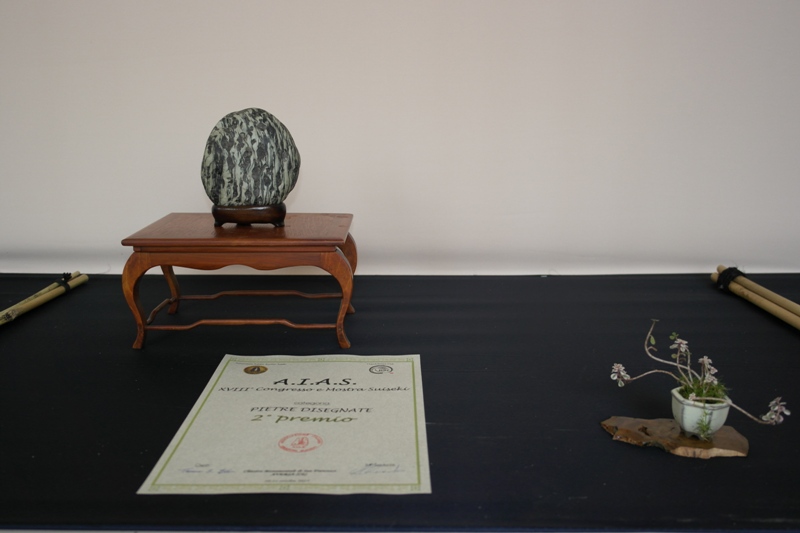
|
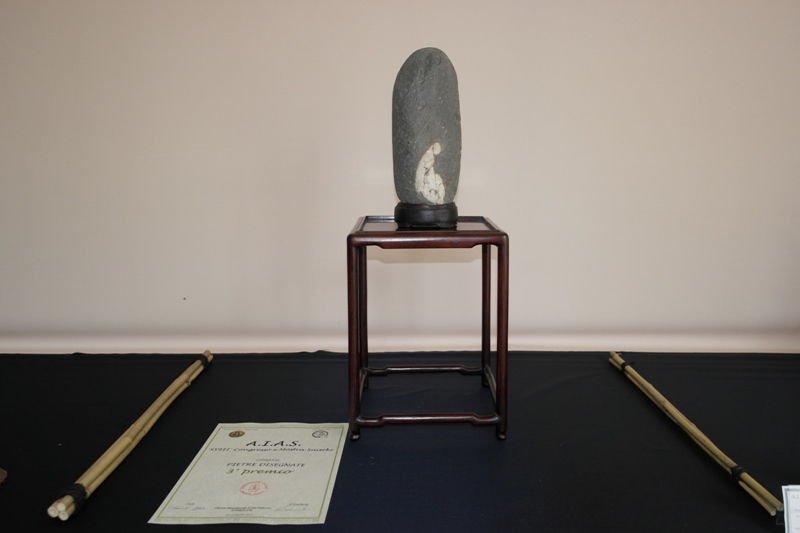
|
|
1° prize to
Mr. Ninh Huu Hiep
"The moon night"
Vietnam
|
2° prize to
Mrs. Laura Segna
Without name
Lombardia
|
3° prize to
Mr. Angelo Attinà
"Nothing else I have to ask or wish"
Liguria
|
|
| |
| "Stones to admire" Category |
|
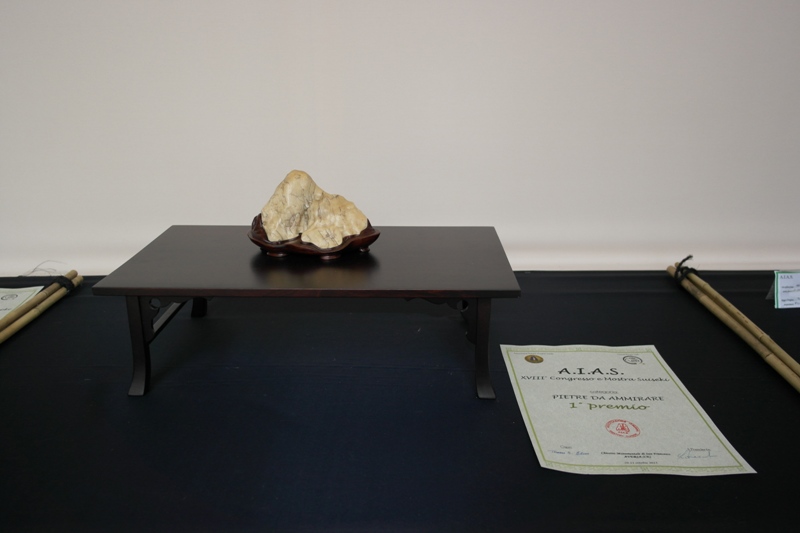
|
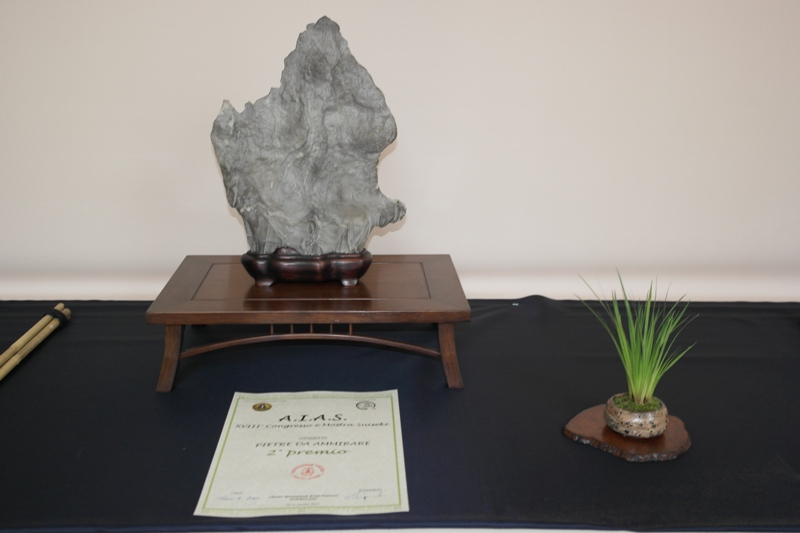
|
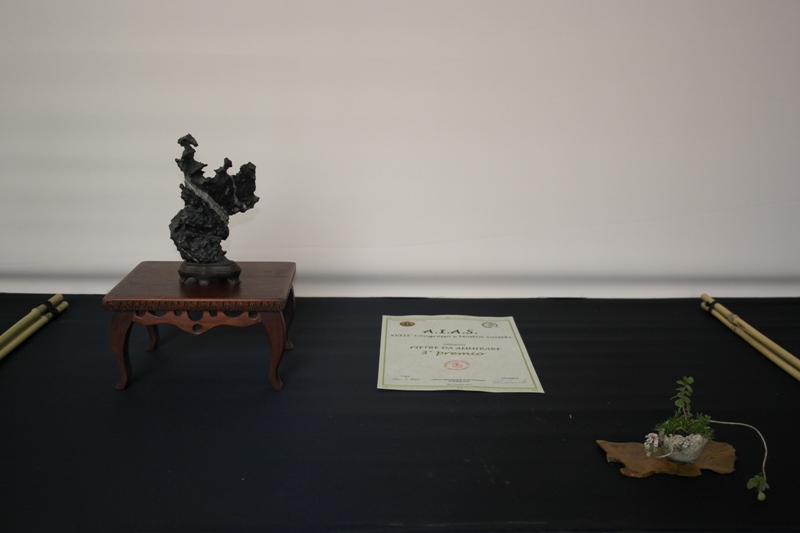
|
|
1° prize to
Bonsai Club Castelli Romani
"Peace"
China
|
2° prize to
Mr. Carlo Laghi
"And then.... the soul"
Liguria
|
3° prize to
ABC Bonsai Castelfranco Emilia
Without name
Emilia Romagna
|
|
| |
|
"B.C. I. EXCELLENCE AWARD FOR SUISEKI" Prize
Judge : B.C.I. President. Mr. Thomas Elias
|
|
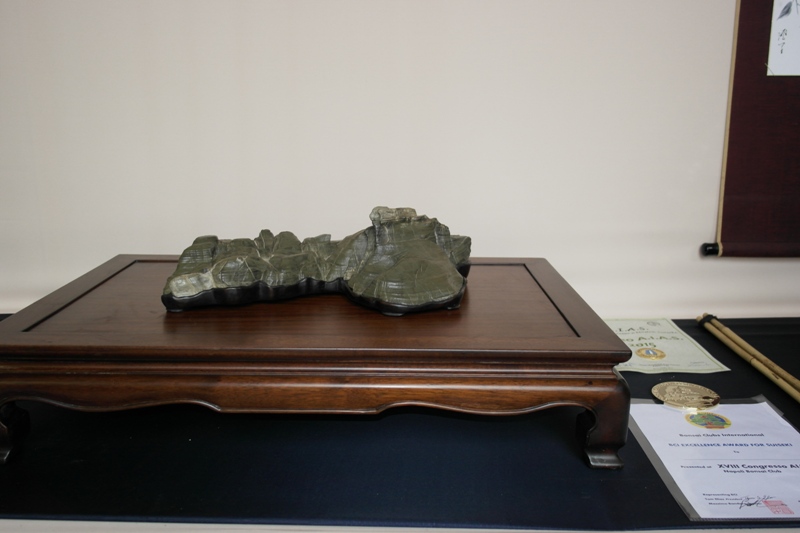
|
|
Mrs. Luciana Queirolo
"Landscape Stones" Category
"Promised land"
Liguria
|
|
| |
|
"I.B.S. Plaque" Award
Judge : I.B.S. Istructor Mr. Ezio Piovanelli
|
|
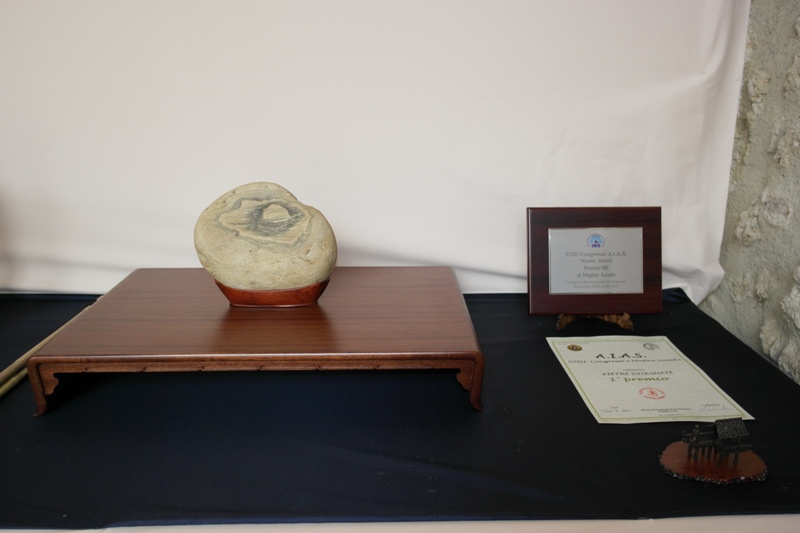
|
|
Mr. Ninh Huu Hiep
"Pattern Stones" Category
"The moon night"
Vietnam
|
|
| |
|
"U.B.I. Plaque" Award
Judge : UBI Board member Mr. Antonio Conte
|
|
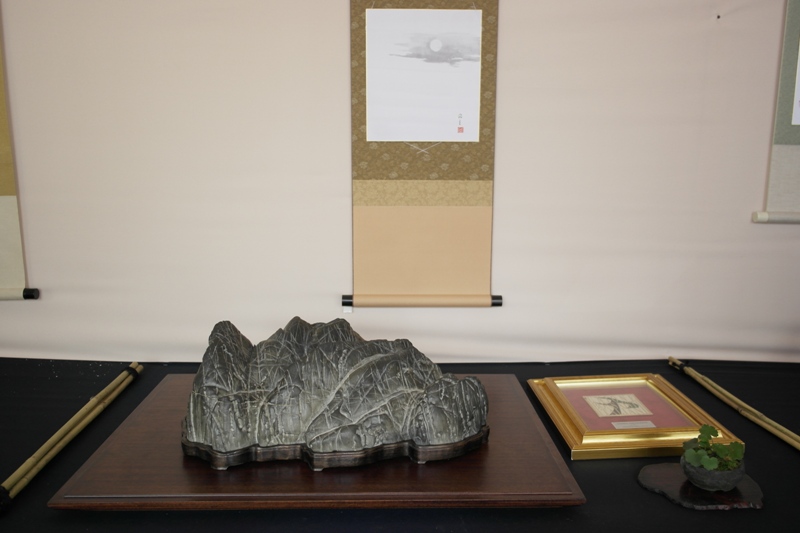
|
|
Mr. Primangelo Pondini
"Landscape Stones" Category
"The sleeping giant"
Liguria
|
|
| |
